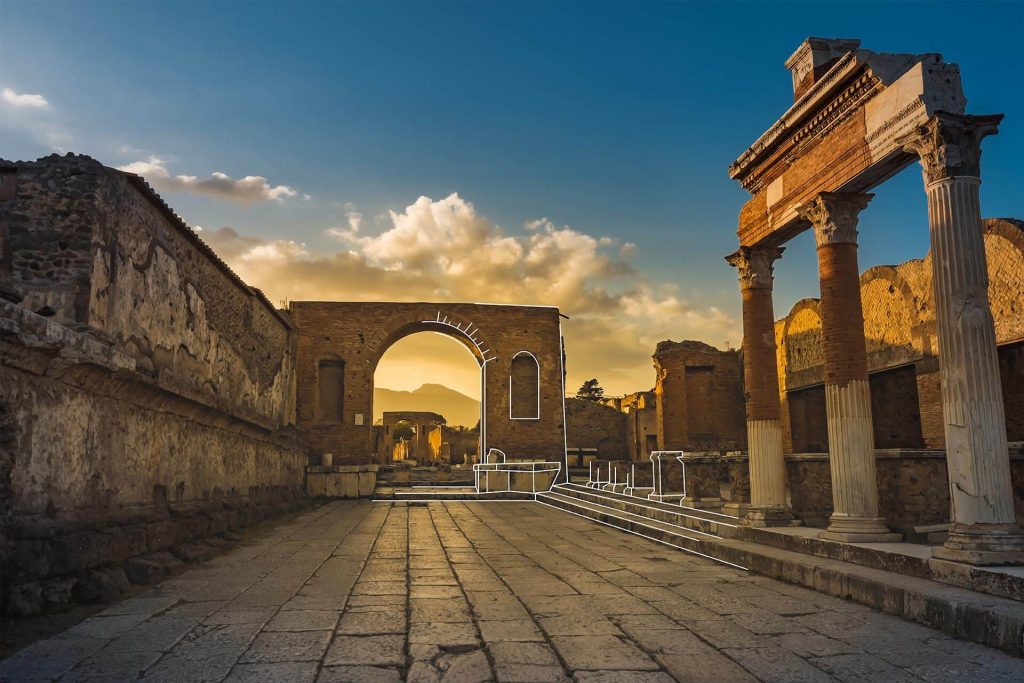The opportunity to see the world through fresh, young eyes can renew the wonder and joy of everyday pursuits. And so it was for the Dassault Systèmes (3DS) employee mentors for six international teams of students that tackled the challenge of re-creating iconic historical sites as virtual twin experiences.

“It has been inspiring for my day-to-day job,” said Pedro Diez Cocero, a 3DS solution experience director for the Architecture, Engineering and Construction industry. Cocero advised the Mexico team as they worked to re-imagine the Hanging Gardens of Babylon, one of the Seven Wonders of the Ancient World. The students’ enthusiasm, he said “is something that definitely is contagious.”
The teams’ efforts are being unveiled today in an online exhibition titled Living Heritage: A treasure for future generations. The challenge is the latest installment in Dassault Systèmes’ 10-act The Only Progress is Human campaign. That campaign focuses on how virtual twin experiences – scientifically accurate, interactive models of products and processes – can help humanity better understand and solve 10 major challenges of modern life.
The Living Heritage challenge, which specifically explores how a better understanding of the past can inform and influence a more positive future, was co-created by the 3DS Corporate Marketing, Branding and Communications team and 3DEXPERIENCE EDU, which provides students and educators with training on the company’s 3DEXPERIENCE platform.
A shared discovery of UNESCO Heritage sites
As the students tackled their challenges, their mentors had the chance to share decades of accumulated knowledge and know-how with the next generation of innovators.
“The challenge has been exciting,” said Philippe Cocatrix, 3DEXPERIENCE EDU sales director for Japan, who advised the Japan team in re-creating Shuri Castle. “It was a very unique opportunity to do something meaningful.”

That “something meaningful” included teaching the students how to use the 3DEXPERIENCE platform to transform their historical research into detailed architectural models; collaborate virtually, despite often being physically separated by COVID; set and meet project milestones; and work as well-coordinated teams. Those lessons helped the teams create their interactive 3D models of six iconic sites, preserving them from the ravages of time and making them forever accessible to people worldwide for generations to come.
Each of the sites chosen by the student teams has sustained damage over the centuries. The eruption of Mount Vesuvius in 79 AD buried Pompeii. A 1349 earthquake collapsed the south side of the Roman Colosseum. Five fires have raged through Okinawa’s Shuri Castle, most recently in 2019. Many of the stones of Porta Nigra, the great Roman gate in Trier, Germany, were carted away for re-use in other structures. History has forgotten whether earthquakes or war collapsed the towering roof of India’s Konark Sun Temple. And if the Hanging Gardens of Babylon ever existed, the ages have erased any hint of where they stood.
Five of the structures are UNESCO World Heritage sites; the sixth – the Hanging Gardens – is one of the Seven Wonders of the Ancient World. The student models not only preserve what remains. They also re-create the monuments as they originally looked, track how the structures and their usage changed over time, and document how they influenced the lifestyles and cultures of the societies that built them.
Mastering 3D structural design of virtual twins
Working with the students gave the 3DS mentors fresh perspective on the 3DEXPERIENCE platform they and their customers use every day. The platform was conceived to unite design, modeling, simulation, collaboration and other software-enabled activities, and eliminate functional silos to fully exploit all of an organization’s knowledge and know-how.
None of the students had any exposure to the platform when the challenge began, making it a good test of how quickly they could master the technology to create their models.
“My role was first to introduce the students to some of our newest solutions and guide them through the initial practices of designing,” said Dragos Dascalu, Euronorth industry process consultant and mentor to the Netherlands team in digitally reconstructing Pompeii before the eruption of Mount Vesuvius. “The biggest challenge was the start. We were only looking at research. From there we had to come up with a design approach to connect all the images, all of the past interpretations, into tangible design.”
“When we look at the 3DEXPERIENCE platform, we have applications like 3D Drive to make sure we had a single source of truth,” said Sean O’Neill, the 3DEXPERIENCE Works industry process consultant who mentored the USA team in modeling the Roman Colosseum. “We had applications like 3D Dashboard to organize the information and give key stakeholders a view of the most recent meeting we had, as well as how we were pacing in terms of the project plan.

“And it worked,” O’Neill said. “It worked really well for this project, on a super-detailed level. To see students even use the platform in ways that I hadn’t anticipated, and validating that we’re building the right stuff . . . that was super cool.”
The mentoring experience, Dascalu said, reinforced his realization that “the 3DEXPERIENCE platform is an amazing intersection of scientific and technical knowledge. It allows creativity to merge with complexity.”
Like the students he mentored, the project also made him think about what humanity can learn by better understanding our shared heritage, including lessons for improving the future.

“Human history is a very colorful parade of customs, but also a very complex path of civilization and progress,” Dascalu said. “And in this history, there’s also a lot of missing or forgotten pages, and they are as important as the written history. I think our responsibility today is to consider, to try to imagine, the more silent voices of history when we progress into the future.”
DISCOVER MORE

